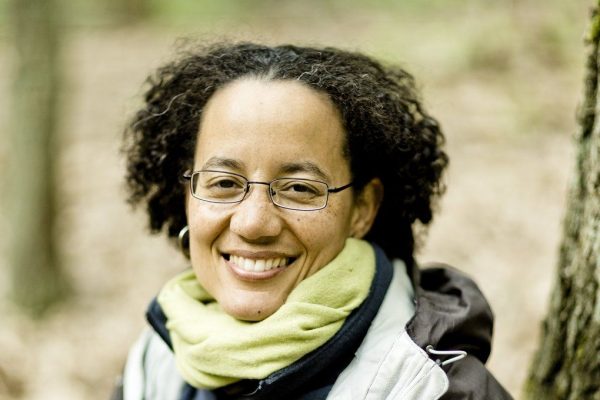Get to know the deeply experienced Kaira Jewel Lingo, contributor to buddhify kids

By Dana Jaffe
Recently, our editor Dana Jaffe sat down with each of the buddhify teachers to find out what they’re all about. Here she talks with Kaira Jewel Lingo about mindfulness + education, teaching meditation to teens, and how mindfulness will change as it reaches a more diverse group of people.
I have always worked with kids. Even when I was a kid, I loved taking care of kids. Then I became a nun in the Thich Nhat Hanh community when I was 25 and began to share the practice with children and young people in our family retreat. This is a big part of the practice that Thich Nhat Hanh has been offering, something that the whole family, the whole society can take part in. One of his passions was sharing mindfulness in education, so we organized many retreats for teachers. In 2010 or 2011, he asked a group of us to draft a proposal to create an official program to train teachers in mindfulness. That program came to be called Wake Up Schools, and it’s now been training hundreds, maybe thousands of teachers throughout the world in the Plum Village practices of engaged mindfulness.
I was part of that initial group coming up with the curriculum for what we thought teachers needed to learn — first, emphasizing the cultivation of mindfulness for themselves just as individuals, and then, secondly, ways they could bring it into their work as teachers in the classroom with their students and with other colleagues. After I left the community, I’ve continued that focus. I have led several retreats for teachers in the past few years and mentored teachers to do the Wake Up Schools training.
I like teaching all ages, but there is something special about being with teens. Of course, all teens are different, and it depends on the context, but I’ve taught a lot of teen retreats, and when they’re in an environment that supports them to come home to themselves and to be with other teens that are accepting them, interested in them, and supportive of them, they really blossom. I’ve just seen real transformation happen quite quickly.
I think there’s a lot of suffering in teens — a sense of social anxiety, the awkwardness of puberty, and then trying to fit in. I know that was probably one of the hardest stages of my life. There’s so much suffering at that time. When you come into a space where you’re accepted for who you are, and you don’t have to put on a mask or be something you’re not, it’s so different. They don’t encounter those spaces very often. When I’ve taught teens in a school, they’re receptive, but it’s harder because they’re much more guarded. They don’t have this special place and a few days of time to sink into a practice, but it’s still beautiful. Teens can really grasp this also, very deeply and quite quickly, so the environment doesn’t have to be on a retreat, but I have had very beautiful experiences when teens come on retreats. It’s really transformative, and many of our good seeds can come out when we’re in that environment. Teens are, because of their age, very impressionable, and they can really be influenced by a positive environment. Everyone can, but there’s a real beauty to working with that age group.
I think it will reflect more of the cultural wisdom and the framework of the people who are beginning to access it. Mindfulness isn’t just this neutral, objective thing that’s applied in the same way in all situations. It came from a particular place. It was practice. It was developed by particular people in a particular historical concept, and it has had a certain cultural flavor to it. As it meets different people, different cultures, different wisdoms, it’s going to reflect and shift and adapt to those groups.
There needs to be a kind of translation sometimes in different environments so that the language is appropriate for the people in that place and coming from the context they come from so that there’s a sense of feeling at home in a practice, rather than it being foreign. Those kinds of translations are happening. There’s wonderful teachers and books and practices and even things like angel cards that are about mindfulness and meditation but that reflect a different cultural context. I think the beauty of how the different spiritual traditions have evolved over millennia is that, if they’re really going to work for people, people have to make them their own.
Kaira is all heart. A former nun in Thich Nhat Hanh’s Order of Interbeing and now based in Washington DC, Kaira teaches classes and retreats all over the world. She has a specialism in mindfulness for children and young people having edited Planting Seeds: Practicing Mindfulness with Children and helped establishing Wake Up Schools.
You can experience Kaira’s contributions to buddhify kids through the meditations for Eating, Outdoors, and Growing Appreciation. You can find out more about her and her work at www.kairajewel.com.